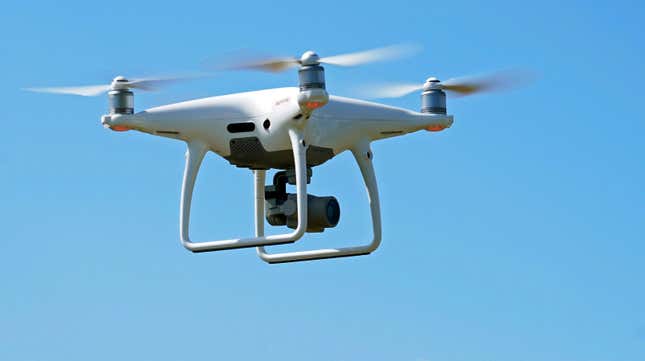
Screaming into the void may be a thing of the past. A team of researchers said this week that they’ve developed a system that would allow rescuers to fly drones over disaster areas and identify the sounds of people trapped who are screaming for help.
The new technique was presented Tuesday at the Acoustical Society of America’s annual conference. “If there is a building that is being destroyed, or if there is a catastrophe such as an earthquake people could be trapped under the rubble, rescue crews need to react really quickly,” said Macarena Varela, a researcher at Fraunhofer FKIE, who worked on the array and presented it to the Acoustical Society over Zoom. “It’s difficult for them to find the location of these people, but we could easily assist them in finding these locations if we’re using a UAV flying over a big area detecting human screams and other noises.”
As grim as it may sound, the past few years have shown numerous use cases for this type of technology. Communities have been built in locations prone to wildfires, hurricanes, floods, and other forms of extreme weather. People in hurricane- or wildfire-stricken areas who need help have often been cut off from cell service or other forms of communication. Horrific images often emerge after natural disasters like the Camp Fire or Hurricane Harvey of rescuers working around the clock to find survivors.
Climate change is worsening storms and fires, making the need for life-saving technology all the more urgent. Figuring out ways to use technology to cut down the time to find people seems like a solid choice, even if it’s something as creepy-sounding as a drone that knows your screams.
The process for creating this scream-seeking drone started with assembling a database of screams (wow) and other “impulsive” sounds people make when they’re trying to get the attention of rescuers, like tapping, clapping, and stomping. Using deep learning techniques, this database was then tested with a microphone array set up inside a lab to see if the system could accurately tell the difference between these human-in-trouble sounds and other types of noises. The lag between the microphone system picking up the sound of a scream and accurately identifying its location to rescuers, Varela said, was just a couple of seconds. The researchers also ran speech clarification tests, which allowed them to amplify the sound of a distant mumble—like someone talking overheard from far away—to a crystal-clear sentence. That could help rescuers identify important information about the specific needs of people who are trapped or otherwise in trouble.
Next, Varela and her colleagues positioned more than 60 digital microphones on top of a drone to take the system out of the lab and into the (literal) field. Unlike traditional microphones, digital ones don’t need a sound card and are much less bulky, making them easier to deploy on drones. The microphones themselves, the researchers say, are not that expensive at just a couple of Euros a pop while first responders are already beginning to use drones to get aerial data of disaster sites so it could be an easy add-on.
“Our idea would be flying outdoors and finding noises coming from collapsed buildings, but this array could be used in numerous other situations and could be used by a person carrying it,” she said during a press conference. “Drones can cover much bigger areas quicker than people on the ground, but of course it could also be used by rescuers who are maybe not hearing the noises and who could walk around with it, so the system could detect this noise.”
In a video of the drone setup posted on the Acoustical Society of America website, you can see the drone in action, turning mid-flight towards a researcher screaming for help. “The idea would be to use a drone and fly the area in general to detect the sound, and as soon as a sound is detected, the drone would fly near the place and hover in order to identify the exact position the sound is coming from,” said Varela.
While the bigger arrays work great in the lab, Varela said they haven’t yet tested the mobile drone system fully in the real world. Still, she anticipates that a tool like a drone could be very useful to rescuers working to cover large areas in a short amount of time. Other sensors like ones that could be used to detect unconscious victims could also be incorporated to help make the operation more comprehensive.
“When a disaster occurs, every minute counts in finding missing people,” Varela said.